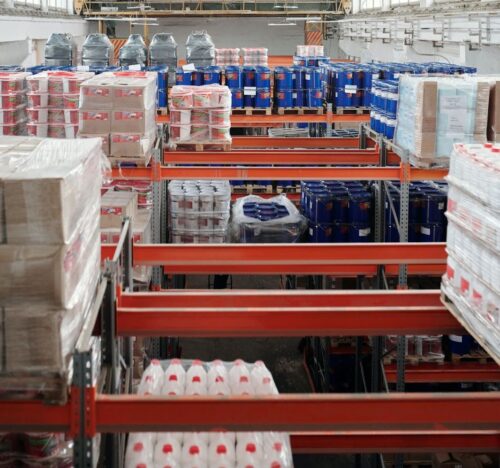Demand Planning vs. Supply Planning: Key Differences and Value

Demand planning vs. supply planning remains a cornerstone debate in the logistics sector. Both concepts are integral to supply chain management, determining many businesses’ efficiency, cost-effectiveness, and overall success.
Recent studies indicate that organizations that effectively balance demand planning and supply planning see up to a 15% increase in forecast accuracy and a 35% reduction in inventory costs. A company that successfully applies these concepts in forecasting customer demand and managing inventory production ensures a streamlined supply chain.
Demand Planning: Its Significance and Differences
Demand planning revolves around forecasting customer demand to match optimal inventory management. By analyzing sales data and other factors, demand planners create a demand plan that predicts future customer demand.
This demand plan is used to guide supply chain operations, align with financial and service goals, and achieve accurate forecasts.
Key components of demand planning include:
- Historical Data Analysis: Leveraging historical sales and related data to identify patterns and trends.
- Demand Forecasting: Utilizing tools like demand planning software and unconstrained demand forecasting to project expected demand.
- Collaborative Planning: Integrating data from various departments, including sales and marketing, to refine the demand forecast.
For instance, many businesses benefit from accurately predicting consumer demand. They neither overstock nor understock. However, failures in demand planning can be catastrophic.
The demand planning department not only focuses on raw demand potential but also partners with marketing and sales teams. Such collaboration yields better demand projections and helps in reducing costs.
An integrated business planning approach ensures each department, including the demand planning department, shares critical component data, streamlining operations and chasing demand effectively.
A notable example was the fashion industry. They needed to capture demand projections to avoid overproduction and unsold inventory. When they failed, they had clearance sales, damaging the brand’s premium image and profitability.
Supply Planning: Its Significance and Differences
While closely related to demand planning, supply planning ensures that businesses have the necessary resources, including raw materials and production capacity, and meet the forecasted customer demand. Supply planners analyze the demand plan and consider the manufacturing process constraints, minimum order quantities, and safety stocks to produce a supply plan that aligns with demand and business limitations.
Essential elements of supply planning encompass:
- Master Production Schedule: Determining the quantity and timing of finished goods production.
- Inventory Management: Managing safety stocks and lead times to produce as needed.
- Raw Material and Resource Planning: Ensuring raw materials and other resources are available for production to avoid potential supply chain disruptions.
A classic example of effective supply planning is a global tech giant renowned for its product launches. Accurately anticipating maximum demand potential and aligning its supply chain operations ensures product availability across global markets.
On the other hand, a contrasting scenario involves a car manufacturer that faced supply chain disruptions when the supply planning failed the forecasting parameters. This led to a critical shortage and resulted in production delays and substantial financial losses.
Supply planning’s role goes beyond just matching production with demand forecasts. Efficient supply planning aids businesses in managing their cash flow by ensuring optimal stock levels and reducing tied-up capital in excessive inventory. By managing minimum order quantities for raw materials, companies can negotiate better terms with suppliers; thus, supply costs remain manageable.
It’s essential for supply planners to remember that demand can be forecasted; external factors like supply chain disruptions can always introduce unforeseen problems.
Demand planning vs. supply planning isn’t just about contrasting two concepts but understanding their interdependency and significance in the broader supply chain management framework. Both play essential yet separate roles in helping businesses meet service targets and, at the same time, reduce costs and optimize cash flow.
The Value of Strategic Demand Planning and Supply Chain

In an ever-evolving business landscape, the strain on demand planning and supply chain management remains a prominent factor in organizational success. Their intertwined roles ensure businesses meet customer demand efficiently, streamline operations, reduce overheads, and maximize profitability.
The essence of strategic demand planning lies in forecasting demand in tandem with a supply chain that smooths the transition of products from production facilities to the end consumer. Together, they form a symbiotic relationship, shaping the trajectory of businesses in many industries.
It’s imperative to note the evolving nature of both demand and supply planning in today’s dynamic market. For many businesses, the challenge isn’t about generating raw demand potential but converting it into actual sales.
Constrained demand forecasting, which accounts for business limitations and constraints, ensures the forecast is realistic and achievable. Such nuanced approaches in demand planning vs. supply planning play a significant role in achieving financial and service goals and help businesses remain competitive.
The Future Role of Demand Planning in Supply Chain Management
As industries become increasingly digitized and globalized, demand planning will play an exciting and essential role in guiding supply chain operations and enforcing that the right product reaches the right consumer at the optimum time.
Career Paths of Demand Planning and Supply Chain Specialists
With the expanding emphasis on integrated business planning, career opportunities in demand planning and supply chain have burgeoned, offering roles from tactical analysts to strategic leadership positions, each instrumental in driving business growth and sustainability.
The landscape for demand planning and supply chain specialists is ever-evolving. With the integration of AI and machine learning, there’s an increased emphasis on data-driven decision-making. Professionals equipped with skills in advanced demand planning software and those who understand the intricacies of managing safety stocks in an era of volatile demand can become leaders in this dynamic industry.
Implementing and Streamlining an Efficient Supply Chain Model

Implementing an efficient supply chain model is pivotal for businesses aiming to meet service targets, reduce overheads, and maintain a competitive edge in today’s fast-paced market. A successful model necessitates harmonizing demand planning, inventory management, raw materials sourcing, and production capacity.
Many businesses thrive by optimizing their supply chains. Amazon, with its Prime delivery model, revolutionized ecommerce by promising quick delivery times. However, failures are equally instructive. BlackBerry once led the smartphone market but faced supply chain problems and was ill-equipped to manage safety stocks and release of new models in a time with industry expectations. This significant failure contributed to its decline.
Key steps in streamlining:
- Accurate demand forecasting based on historical sales and consumer behavior
- Regularly reviewing and updating the master production schedule
- Aligning procurement strategies with expected demand and managing minimum order quantities effectively
- Incorporating flexibility in the supply chain to adapt to sudden market changes
Technology and Software to Enhance Supply Chain Operations
Incorporating advanced technology and software tools in supply chain operations streamlines the processes and offers accurate forecasts and real-time data analysis from past sales data. These innovations are pivotal in enhancing efficiency, reducing costs, and timely delivery in complex supply chains.
FAQs
A list of commonly asked questions about demand planning vs. supply planning and their respective roles in the industry.
What is the relationship between demand planning and supply planning?
Demand planning predicts future customer demand, while supply planning ensures adequate resources and inventory to meet that demand.
What does a supply and demand planner do?
A supply and demand planner forecasts customer demand, manages inventory, and coordinates resources to ensure timely production and distribution in supply chain planning.
What are 4 crucial elements of demand planning?
Historical data analysis, demand forecasting, collaborative planning, and continuous review and adjustment are key elements.
Key Takeaways of Demand Forecasting and Supply Chain
Understanding the distinctions between demand planning vs. supply planning is paramount for efficient supply chain management. Accurate, unconstrained demand forecasting guides supply chain operations and demand planners for businesses to have the right resources and meet customer demand. Integrating both with advanced technology can further enhance operational efficiency and profitability.
